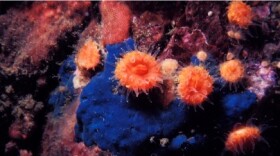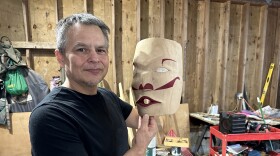Washington is home to only one species of native oak tree. Its habitat is increasingly rare. The flat and relatively open woodland prairies where they once thrived often attract development, against which they have no protection. Scientists estimate that only 3% of their original ecosystems still exist.
But pockets of Garry oak – also known as Oregon white oak – still exist. And one of them, in Pierce County south of Tacoma, recently received a big grant from the state Department of Natural Resources for urban forestry.
Clover Park Technical College maintains a 110-acre outdoor lab and research park next to its main campus in the city of Lakewood. Known here simply as “the Flett,” it regularly attracts students and community volunteers who want to learn about the unique ecosystems that thrive around Garry oaks, which were originally cultivated by Coast Salish tribes. This kind of community engagement is a key factor in winning support from DNR, which is awarding a record $7 million in funding for urban forestry this year. Clover Park Tech’s grant is for roughly $19,000, plus matching funds.
Garry oak savannah amidst urban sprawl
To get to the Flett, you have to cross busy Steilacoom Boulevard. It feels like there’s nothing but sprawling concrete and crosswalks for miles. But, just beyond a U.S. flag put up to mark the entrance, a group of students and community members stood in a circle on a recent rainy Saturday, waiting for a monthly habitat stewardship event to start.
“Let’s move away from the traffic,” said Environmental Science Instructor Derek Faust as he led the group toward a truck full of shovels and gloves.
Just a couple of paces from the arterial, the prized woodland comes into view. There are more than 700 mature Garry oaks here, scattered across grassy meadows that cover about 30 acres.
Many of these trees are hundreds of years old, with craggy twisting limbs forming large round canopy crowns. They’re drought- and heat-tolerant and may survive climate change better than other native species. But they often get cut down to make way for development and agriculture. This is believed to be the largest stand of Garry oaks within an incorporated city in Washington state, said Faust.
“So we're very lucky to have them here, especially since this was the former Flett dairy. So there was agricultural land use right here. But they left the trees,” he said.
A source of food
He doesn’t know why the settlers kept the trees. Some people say they used the acorns as food and oak leaves for pickling. He said these oaks have been on the landscape for as long as we know. Native peoples would harvest the acorns for a variety of uses.
“And underneath the oaks naturally were a lot of native wildflowers, one of which is camas and a couple others, that the native peoples would use as food sources.” Faust said.
“The camas in particular has a bulb that they would harvest, sort of like a potato.”
Clover Park Tech bought the property in the early 1990s. Now every month, students, faculty and other volunteers help maintain it, clearing out invasive species and planting native ones to restore the ecosystem. They also help catalog all the species of wildlife it attracts.
Student Marcia Wilson often blogs about them for the college. She said it’s amazing to see the immense biodiversity here despite all the cycles of settlers and development.
“You’re never going to find it all. Lots of quiet little surprises hiding. Every tree can be a place for something to start growing,” she said.

Biodiversity that fuels curiosity and hard work
Down the hill, about 50 feet below the Garry oak savannah, an expansive wetland covers nearly 80 acres around Flett Creek. On its edge, the volunteers had just finished planting an assortment of trees and were stapling chicken wire into cages around them to protect them from hungry deer and beavers.
Prospective student Blair Wilson (Marcia’s daughter) said she has been volunteering since last spring when she found a tiny wildflower: a bi-color lupine that was undocumented here till she spotted it.
“I was just around, just randomly looking. And I realized these lupines are so small; that's not normal,” she said. “Until I did some research, and I’m like, this is a bi-color lupine from Alaska!”
Current student Jay Hart said he's passionate about restoration ecology, especially when he can do it right in the middle of Lakewood’s suburban sprawl.
”We have so many different species of birds, we have coyotes, we have small mammals, we have a thriving ecosystem here,” he said.
Nearby, someone had just unearthed a bunch of Northwestern salamanders.

Another volunteer who hopes to start school here soon, Kit Price, said they could pull weeds all day in a place like this.
Price wants to go into construction technology and said it's sad to see how often development and conservation are pitted against each other when this ecosystem helps clean the air and filter runoff for everything around it.
“All the different ecosystem services that are provided by having this habitat here, even though it's developed all around, they're still providing those services,” they said. “So we really do need to make more progress in like, finding a way to get environmentalism and development to work together.”
And Price said Garry oak landscapes like this one are especially inspiring because of the way these woodland prairies can show us how Indigenous Americans once lived, cultivating trees and wildflowers for food.
The urban forestry grant at the Flett will fund more restoration, stewardship, and outreach to help the school’s patch of native trees keep thriving.








